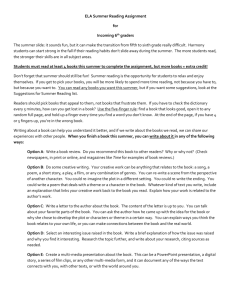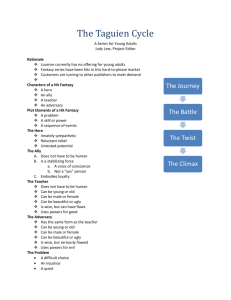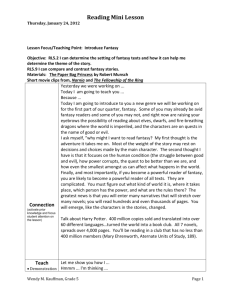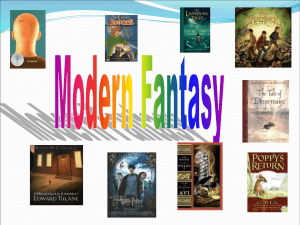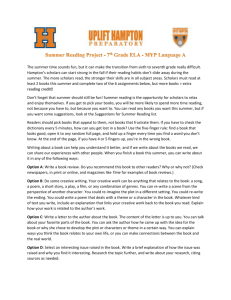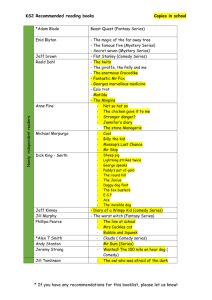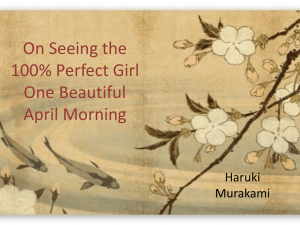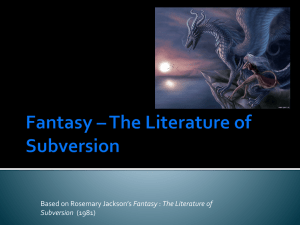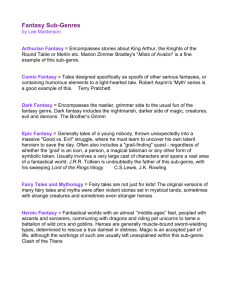GorePowerPointPresentation
advertisement
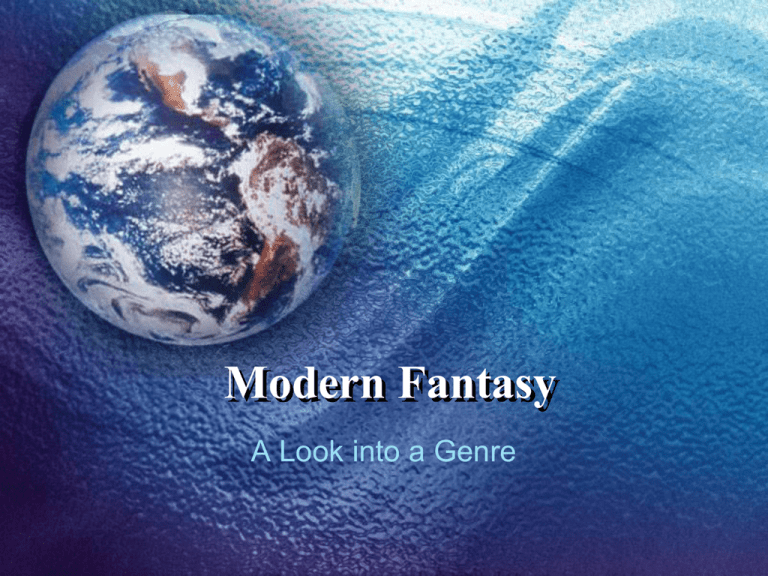
Modern Fantasy A Look into a Genre Definition • Modern Fantasy refers to literature, written by an identifiable author, set in imaginative worlds and make believe. • These stories contain places, people and creatures that could not exist or events that could not happen such as animals talking. • Science Fiction is considered Modern Fantasy since it is impossible at this time but could happen in the future. • Suspending disbelief- the authors ability to make readers suspend disbelief and to accept the possibility that the story could have happened is one of the greatest requirements for modern fantasy. – i.e.- In The Chronicles of Narnia, C.S. Lewis develops normal human characters who visit a realistic English home, and enter into childhood games familiar to most children. – When these realistic characters confront the fantastic and believe it readers believe it too. Characterization • For readers to suspend disbelief, the character from who's point of view a story is told must be believable. • Language is one way that authors of fantasy can make characters believable. • i.e.-In The Lord of the Rings, Tolkien creates distinct languages for different groups of characters. • The magical settings of traditional tales let people know that anything is possible in those environments. • Writers of modern fantasy may also create worlds in which unusual circumstances are believable, or they may combine reality and fantasy as characters or stories go back and forth between two worlds. • The author must develop the setting so completely that readers can see, hear, and feel it. *i.e.-In Eragon,detailed maps help readers visualize the setting. Knowing the locations of places that are important to the story helps readers believe this alternate land could be a real place. • The constant battle between good and evil, faith and perseverance in the face of obstacles, personal and social responsibility, love, and friendship are important themes in works of modern fantasy. • i.e.-As found in David Almond’s Skellig modern fantasy exemplifies some of the strongest, most powerful themes in literature. • Through the characters and plot, Almond develops the themes that love has a redemptive power, that humans have power to change their environments, and that life is fragile. • The point of view in a story is determined by the authors choice of the person telling it. The point of view also changes how the story is told and read. • Authors of fantasy must decide which point of view best facilitates a believable telling of a story and then sustain that point of view in order to persuade readers to keep suspending disbelief in the fantastic elements of the story. • i.e.- In the tale of Peter Rabbit, Beatrix Potter creates believable situations by telling the story from both Peter Rabbits point of view and the first person’s point of view of the story teller. • The authoritative, realistic voice of the story teller reassures readers that the fantastic events being described and normal and understandable. References • Norton, D.E. Through the Eyes of a Child: An Introduction to Children Literature. • http://www.uleth.ca/edu/currlab/handouts/g enres.html • http://www.clt.astate.edu/sparks/Modern% 20Fantasy.htm

